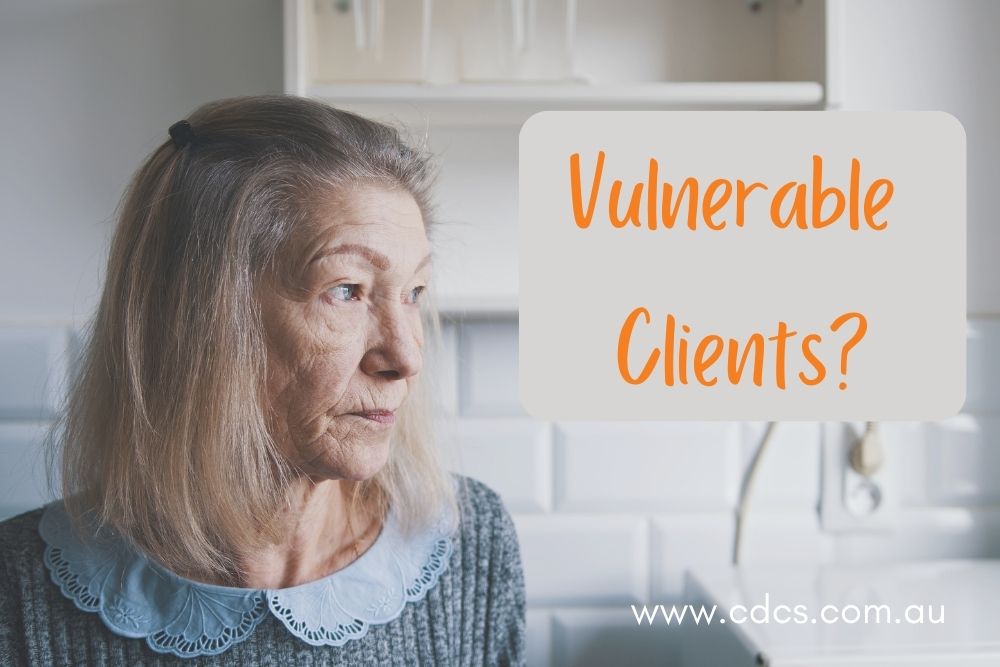When my parents retired, they decided to make a “tree change” and moved away from the outer Melbourne suburbs where they had raised their family and spent most of their lives.
They purchased a small home on a bush block and enjoyed the peace and quiet of country life for a number of years. They could still drive, and there was a reasonable-sized town only 20 minutes away where they could purchase essentials and a large regional town only an hour away.
Unfortunately, my father’s health deteriorated over time. He had a number of strokes which eventually led to him being forced to give up his driver's license. That small town was no longer accessible to him unless Mum was around.

They became more isolated.
Their family was spread around Australia and unable to help on a day-to-day basis if Mum needed to go away for a few days. This put Dad at increased risk, especially as he didn’t always remember to take his tablets.
Dad was becoming what we would term in the care industry ‘a vulnerable person’.
Recently we’ve worked with a number of home care organisations on their pre-quality review preparation. We’ve noticed the Aged Care Quality and Safety Commission is now asking organisations for a copy of their vulnerable person’s register.
Many organisations have alerts added to a client’s file if they identify a risk, but how are organisations identifying and determining who is vulnerable within their client cohort? When we checked with managers, we noted that most had no formal process for identifying vulnerability; they relied on a range of indicators and intuition.
While this has been more or less effective, some people still slip through the cracks, so we developed a template to help providers take a more organised approach to this aspect of client care.
The Aged Care Quality and Safety Commission have a list of characteristics that identify increased risk within a person. We wanted to explain it a bit more to give providers a clear range of characteristics or indicators that, if put together, highlight an increased risk or vulnerability in a person – especially in a rural or remote context where sometimes situations can be a bit more complex.
Below is a list of indicators that have been identified by the CDCS team and the aged care providers we work with:
- Geographically isolated (e.g. living on an outstation or an isolated dwelling away from the general community)
- Lives alone and has few visitors
- Has a suspected or diagnosed mental health condition or has suspected or diagnosed cognitive impairment or dementia
- Has a disability that impacts on the person’s ability to carry out activities of daily living
- Relies on others to maintain continence, and there is evidence that indicates this may not be occurring
- Is a high falls risk and lives alone, and may not be adequately supervised by others living in the home
- Has limited access to or relies on others for shopping or relies on others for meal preparation and cooking
- Has been identified as non-compliant with medications or relies on others to prompt to take medication, and it is suspected that the prompting is not occurring
- Has a number of comorbidities (health conditions)
- Has difficulty communicating their needs
- Is reliant on essential powered equipment such as home oxygen to support a health condition
- Has no safe sleeping place in the home or bedding security is confirmed or suspected to be an issue
- Lives in a home where food security is suspected to be an issue
- Lives in a home where there are significant physical risks that cannot easily be addressed by the organisation (e.g. squalor)
- Is at risk of abuse, or there is suspected or confirmed abuse
- There is only one Carer (family member) involved in the person’s life, or Carer stress is identified
Of course, this is not a definitive list and not all these indicators would be seen in one person. Additionally, any one of these indicators would not necessarily increase the risk profile of a person, but where a person has a combination of them, it may.
However, using a list like this helps providers understand the risk profile of their clients better. If a person has a number of characteristics that indicate they may be more vulnerable, the person can be added to your risk register.
Also, don’t forget to identify what you are doing to address this risk for each vulnerable person you place on the list. Perhaps additional monitoring is required, more frequent visits, changes to service provision, and education or information for family members. Document your actions in the person’s progress notes.
For those organisations with a subscription to the CDCS TQP Resource Hub, you can download the home care or residential version of the vulnerable person’s checklist template, policy and procedure, new toolbox talk, and watch the replay of our recent training session on this topic.
If you’re not already a subscriber, discover the path to effortless compliance with the Total Quality Package. Book a 30-minute complimentary call with one of our experienced team members to talk through your organisation’s needs. We understand the unique challenges you face as an aged care provider. That's why we've created a central hub to support your organisation with the latest policies, procedures, and operation resources. With these resources, you can navigate the complexity of compliance with ease and confidence, saving you time and stress.
- Aged Care Packages – what's in the box? - February 16, 2024
- 11 Ways to Make Your Progress Notes Better - September 22, 2023
- Vulnerable Clients – Who are they? - July 14, 2023



